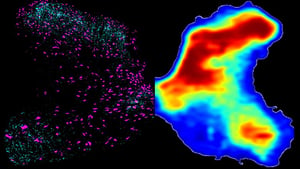A new hope for recovery of hands functionality after a spinal cord injury comes from researchers at King’s College London, who have described in the journal Brain the good results obtained in lab animals, thanks to a particular type of gene therapy. How does it work? When the spinal cord, which is contained within the vertebral canal, suffers damage (after, for instance, a traffic accident or a fall), large areas of scar tissue are formed almost immediately (similar to those of common scars), which often prevent injured nerves from re-growing regularly and reaching areas where stimuli coming from the brain should lead. Hence the paralysis (which varies depending on the point where the bone marrow is damaged), or in any case situations that make difficult to move (most of the traumatic lesions of the spinal cord, in men, occur at the neck level, and this can also cause paralysis of all four limbs).
One of the agents responsible for this “wrong” healing and consequent blocking of nerve impulses, is chondroitin, a protein that – according to various studies – can be deactivated by an enzyme called chondroitinase. Precisely on this enzyme the British biologists have focused their attention: using very sophisticated techniques on lab animals, they managed to get into the cells of the damaged areas a gene (a stretch of DNA) capable of inducing the production of chondroitinase and, therefore, to block chondroitin and the consequent growth of scar tissue. In addition, researchers have also found the way, through administration of an antibiotic, to activate only at the desired moments that gene (chondroitin cannot be blocked continuously, being also a fundamental component of the connective tissue, that is the tissue supporting other kind of tissue, and this would be incompatible with life). Well, the animals treated with this new gene therapy have recovered part of the motor function of the front legs (equivalent to human hands): functionality that had been lost as a result of trauma induced by the same researchers. The animals were able to precisely grasp some granules of sugar, without obvious side effects.
Despite the positive results, this technique is not yet ready for human experimentation, because several security problems remain open. But new studies will be started to try to solve these difficulties.


